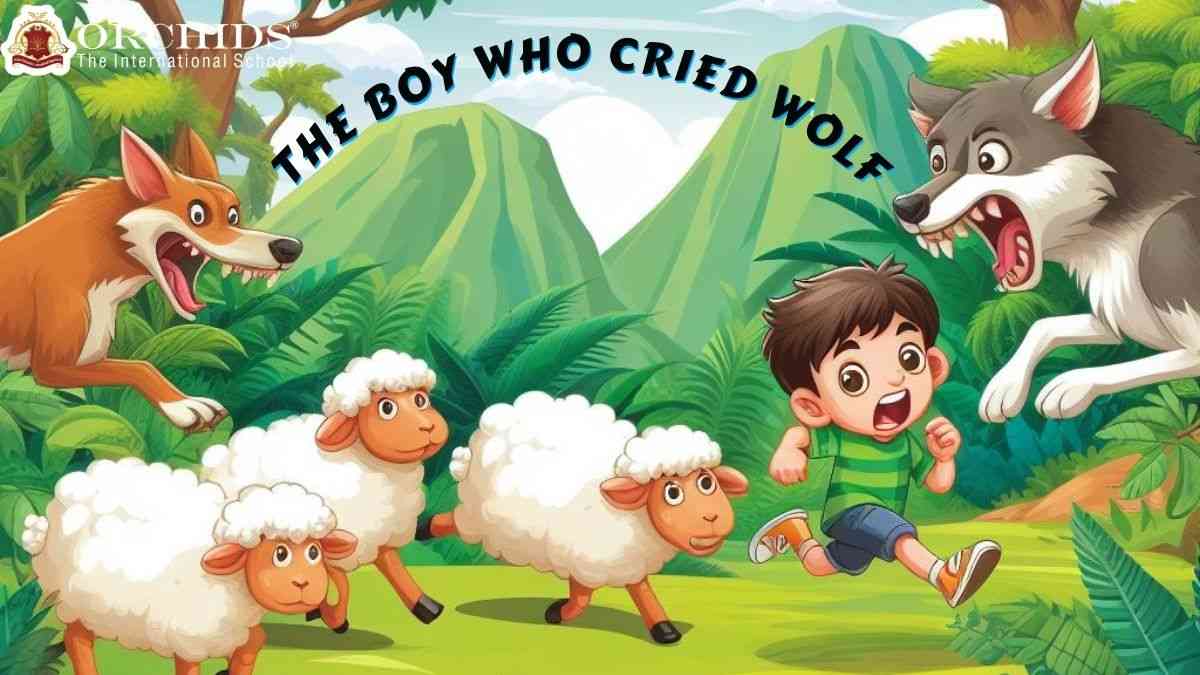The Boy Who Cried Wolf Story With Moral

The Boy Who Cried Wolf Story
Once upon a time in a quiet village, there lived a young shepherd boy. His days were spent on the sun-kissed hillside, where he watched over his flock of sheep. But as the days wore on, boredom began to creep into his heart, and with it, a mischievous idea.One day, with a twinkle in his eye, the boy decided to play a prank on the villagers. He dashed towards the village, shouting, "Wolf! Wolf! Help! There's a wolf attacking the sheep!" His voice echoed through the rolling hills, and in no time, concerned villagers rushed to his aid, armed with pitchforks and clubs.Their faces etched with worry, they searched high and low for the menacing wolf, but to their surprise, there was no wolf in sight. Instead, they found the boy, grinning mischievously. "I was just playing a prank on you!" he chortled, reveling in the success of his trick.
The villagers, though irritated, forgave the boy for his misdeed. However, as the days passed, boredom gnawed at him once more, and the temptation of the prank proved irresistible. He ran to the village again and cried, "Wolf! Wolf! Help! There's a wolf attacking the sheep!"Once more, the villagers came running, their faces etched with concern, their hearts pounding. But again, there was no wolf to be found. The boy couldn't contain his laughter as he admitted, "I was just playing a prank on you again!" This time, however, the villagers were not as forgiving. They warned the boy that they would not tolerate such deceit in the future.
A few days later, a moment of reckoning arrived. While watching his flock, the boy suddenly spotted a real wolf approaching. Fear gripped his heart as he cried out, "Wolf! Wolf!" desperately seeking help from the villagers.
But this time, the villagers, remembering the boy's previous pranks, hesitated. They thought it might be another trick. Slowly, they began to doubt the authenticity of his cries for help. No one rushed to his aid, and the wolf, seizing the opportunity, attacked the sheep.
The boy's loud cry for help grew desperate, but they fell on deaf ears. By the time the villagers finally decided to check, it was too late. The wolf had wreaked havoc among the flock, and the boy was left with only a few of his sheep. He looked around at the chaos, his eyes welling up with tears.
From that day onward, the boy learned a valuable lesson. He realized the consequences of his lies, as he watched one of his beloved sheep being carried away by the cunning wolf. The villagers, too, learned to be cautious with their trust. And so, the boy vowed never to lie again, his heart heavy with the knowledge of the importance of telling the truth.
"The Boy Who Cried Wolf" is a timeless story that continues to be cherished for its moral lesson and is a staple in the world of storytelling and children's literature.
Moral of the Story
The moral of the story: Even when you tell the truth, people will stop trusting you if you lie too frequently. That is the lesson to be learned from this tale. Even though it can be challenging, it's crucial to always tell the truth. At any cost, you can be saved by one truth, but you will never be saved by too many lies. Telling the truth is always the best course of action for everyone, regardless of the circumstances. One must never lie even for the sake of a joke. Later it might turn up into a tragedy likewise happening in the boy’s story.
FAQs on the Story "The Boy Who Cried Wolf":
1. Who is Aesop, and why are his fables famous?
Aesop is a legendary ancient Greek storyteller and fabulist known for his collection of moral tales. Aesop's Fables are famous for their simple yet profound stories that impart moral lessons, making them accessible and relatable to people of all ages and backgrounds.
2. What is the moral of "The Boy Who Cried Wolf"?
The moral of the story is that honesty is the best policy. It teaches us not to deceive or play pranks on others, as it can lead to a loss of trust and credibility when we truly need help.
3. Are there variations of this story in different cultures?
Yes, there are variations of this story in different cultures around the world. It's a universal theme of the consequences of dishonesty, and many cultures have their own versions of this cautionary tale.
4. How has "The Boy Who Cried Wolf" influenced literature and popular culture?
The story has been referenced and adapted in various forms of literature, film, and popular culture. It continues to be a source of inspiration for exploring themes of trust, honesty, and the consequences of one's actions.
5. What age group is the story suitable for?
"The Boy Who Cried Wolf" is a classic children's story and is most commonly told to young audiences. Its simple yet profound moral lesson makes it suitable for children of all ages.
6. Can you recommend other Aesop's fables with important lessons?
Certainly! Some other well-known Aesop's fables include "The Tortoise and the Hare," teaching the value of perseverance, and "The Ant and the Grasshopper," emphasizing the importance of hard work and planning.

